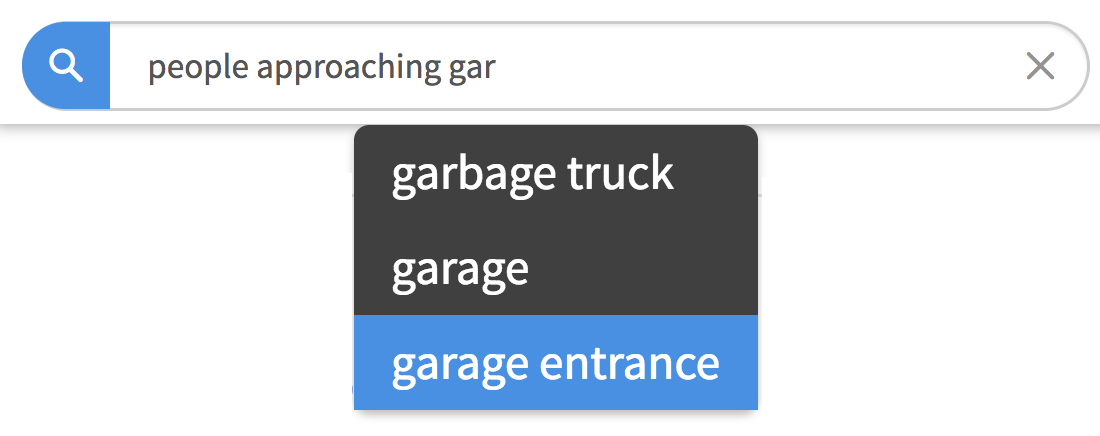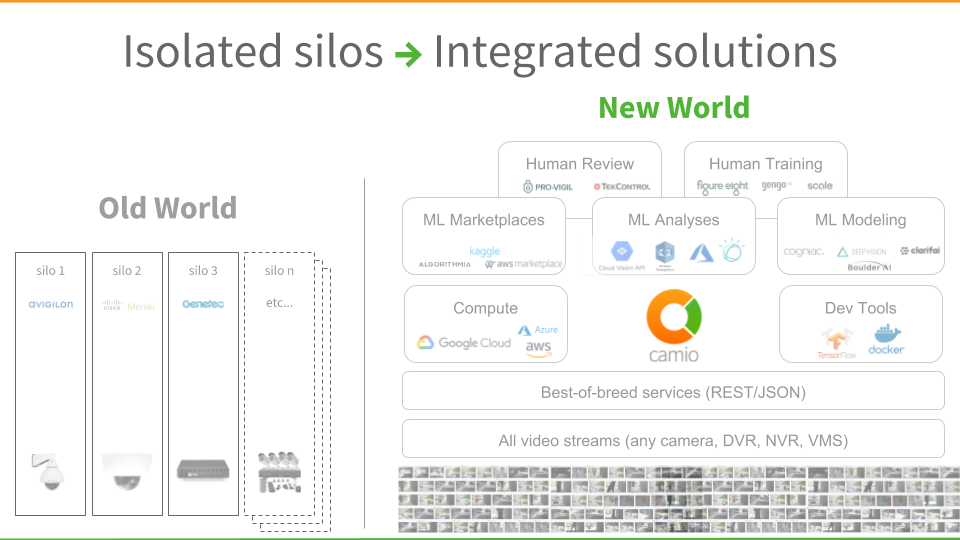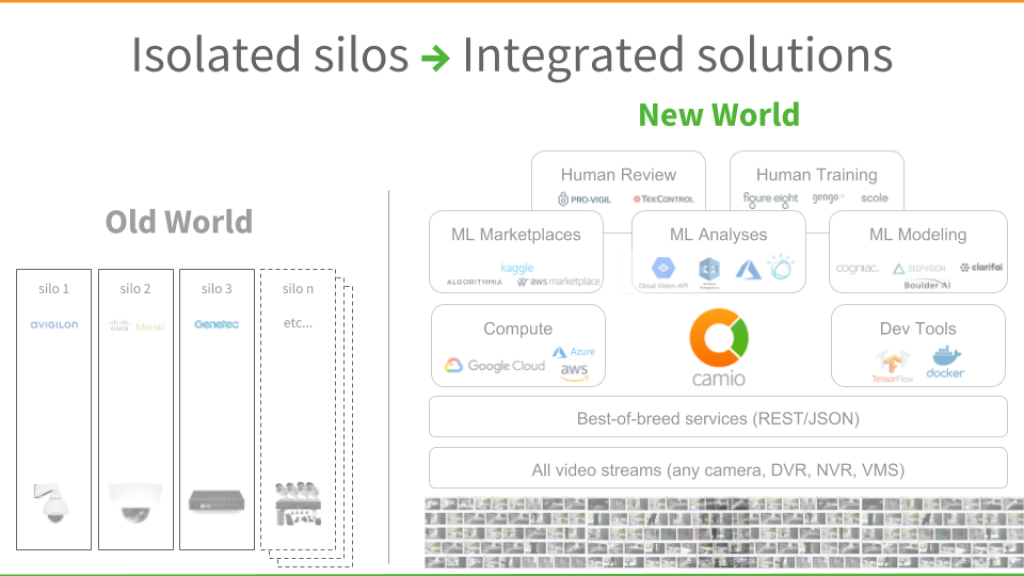This blog post was originally published at Camio's website. It is reprinted here with the permission of Camio.
How a top real estate company is leading the security industry towards modernization

Securing its 800 properties is cheaper and more effective with Camio’s use of modern cloud infrastructure and AI.
In planning video security for 800 properties, a leading real estate company asked a simple question: why aren’t better solutions available? Why is the state-of-the-art in physical security so far behind all the other software powering other business processes? That simple question kicked off a 6-month collaboration with the Camio team to demonstrate what’s possible with an open video processing pipeline built on modern technology platforms.
The key insight behind selecting Camio was that the SaaS approach to video surveillance manages operational costs to match both security risks and business needs. Unlike expensive on-premise systems provisioned for peak capacity 24×7, cloud-connected cameras could vary their service levels by type of scene, schedule, observed activity, risks, and patterns in usage — all while improving continually over time via Machine Learning.
The old proprietary, vendor-dependent systems common to the security industry could instead become flexible, on-demand, best-of-breed combinations of services, orchestrated around cloud data. The company’s path to using Camio as the most cost-effective 24×7 video surveillance monitoring for their Security Operations Center (SOC) also established a shared platform for business insights and integrations with other systems.
Increasing expectations drive vendors to collaborate
Security video used to be little more than black box recorders, reviewed only in after-the-fact forensic investigations. Since the sheer size of the video streams relegated solutions to on-premise recorders, their usefulness, reliability, and accessibility were constrained by on-site hardware and network limitations. Each deployment was an isolated system.
Those fragmented deployments created today’s ecosystem of standalone solutions. Operating alone, each vendor attempted to assemble end-to-end solutions spanning cameras, storage, networking, analytics, remote access, etc. The results have been mediocre at best — a hodgepodge of systems with minor improvements and major security vulnerabilities.
When industries move slowly, there’s less pressure to exploit the comparative advantages of ecosystem partners to deliver the best solutions quickly. Even as new technologies emerge, the uncertainty about each company’s role in the value chain impedes collaboration. Customers will wait. They’ll accept the status quo. They have few choices.

Example: Every garage entrance can be searched in seconds. Before recent advances in Artificial Intelligence (aka Machine Learning), it took hours or days.
All that changes when the pace of new customer demands accelerates to exceed any one company’s ability to deliver solutions. That’s what’s happening now, because the Web, Mobile, IoT, and AI infrastructure driving consumer technology innovations have become so commonplace that they’ve inflated what’s expected from commercial security systems. It’s understandable. If we can search the entire World Wide Web in 50 milliseconds, why can’t we find the hit-and-run reported yesterday without hours of video review? If everyone is labeled automatically in our family photos for instant sharing, why can’t security staff be alerted when an unauthorized person is in a restricted area? If our phones alert us when we haven’t read a message, why can’t we learn that a camera is broken before we need its recordings? These are just the simple requests on the way to asking machines to see and understand what’s happening in the real world.
Better Legos needed
The company’s execs for IT and Security surveyed the industry landscape on the showroom floor of ISC West. Hundreds of exhibitors used similar words to sell similar solutions under different brands — and few of them satisfied even the basic expectations of modern IT for open and layered architectures that make services and data accessible to all business processes. Instead, the team felt like every vendor was trying to “pull us down their rabbit hole.”
It’s natural for vendors to pull. There’s no standards body or chief architect that changes an industry. Market demand is what changes an industry. And those new demands are arriving quickly now with the boom in cloud and AI technologies. The security industry has been limited by the UX, architectural, and ecosystem problems similar to those highlighted for IoT by Scott Jenson in Building Better Legos. Replacing monolithic systems with secure and open protocol layers isn’t about architectural purity. It’s about unleashing innovation like we’ve seen for the Web:
One of the reasons the web has been so successful is that it’s open and layered. Everything from lower-level transports to higher-level content are their own open layer, so they can each grow and improve independently. The web has used this approach for more than 25 years.
All cameras aren’t created equal
The first step in the collaboration was to outline the business needs driving the video monitoring. Even as chipset makers deliver more compute power with GPUs and specialized chipsets, not every camera demands continuous frame-by-frame analysis with GPU-intensive Convolutional Neural Networks. The apartment gym camera may need only the lowest cost video history to defend against liability claims. The underground garage entrance of a landmark office building may need immediate identification of every car. The drug dispensing medical office may need 100% assurance of an uninterrupted 24×7 video history with 90-day tamper-proof storage guaranteed. Even the same type of scene may vary in its monitoring needs by time of day, time of year, or staffing coverage. So one of the first realizations was that the money spent on video surveillance could be continually matched to the risk being mitigated.
Reducing costs via schedule-based and on-demand indexing
Step two was sticker shock. After running a two-month trial across three properties, the first usage-based cost estimates for continuous AI video monitoring were 3x the targeted budget! That sobering budget discrepancy triggered a deeper look at the use cases that delivered the most business value. In most cases, the higher security risks corresponded to lower-activity periods of the day. So by scheduling the advanced analysis and indexing for each individual camera, the overall operational costs dropped radically (by ⅔). The on-premise video gateways still buffered 24×7 video to be indexed upon request and pushed the latest salient video events to the SOC video wall. So the flexibility of having programmatic control over all 24,000 video streams enabled big cost savings without much sacrifice in the ability to mitigate security risks. In contrast to traditional one-size-fits-all, peak-capacity, on-premise solutions, Camio provided the knobs required to match service levels with risk levels for the best ROI.
Camio as both tactical and directional choice
It’s true that Camio was the best value for the SOC’s immediate remote video monitoring needs. But choosing Camio was also a simple directional choice: draft off of the continual advances of the major cloud platforms to deliver better solutions faster. For example, once Camio efficiently delivers the video and data to Google Cloud Storage, then it’s simple to orchestrate services that augment analyses, export data, and integrate with other systems. The company’s solutions can then float on top of all the platform advances in AI, storage, and networking.

New demands are creating open, best-of-breed services with cloud data and service integration.
Future-proof extensibility and integration
With the cameras connected to the cloud and accessible via modern REST/JSON APIs, it’s easy to add new capabilities and to integrate with other systems. Upgrades are continual and automatic. There’s no need for scheduled maintenance or on-site visits. For example, annotating video events with badge-ins from access control systems becomes a one-line API call, so it’s simple to review the video associated with people that entered a secure area.
curl \
-H "Content-Type: application/json" \
-d '[{"timestamp":"2018-06-25T17:04:51.460+0700", "labels_to_add": ["badge123", "unlocked"]}]' \
-X PUT https://camio.com/api/users/xyzpdq/devices/site1/annotations
Camio makes integrations simple. This is a badge-in annotation.
Plus, the video processing pipeline itself can be extended via Hooks to incorporate new analyses as new needs emerge. Since the cloud storage is concurrently and securely accessible to any authorized application, specialized AI services like occupancy counts and dwell times can analyze the video at any sampling interval and feed information to database systems that are accessible to any other application. By choosing Camio to extend the advantages of SaaS to their video surveillance systems, the company’s Security Operations Center has laid the groundwork to be the beneficiaries of continual improvements in state-of-the-art security.
Carter Maslan
CEO, Camio


